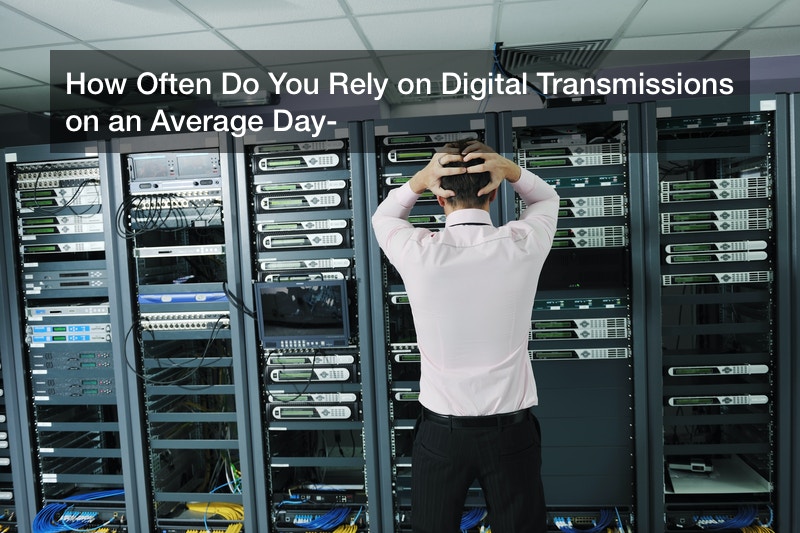How Often Do You Rely on Digital Transmissions on an Average Day?

From the sharing of hospital records to the shows that we binge watch on the weekend, we are a society that depends on communication. Fortunately, a network of fiber optic operators and telecommunication company groups provide the backdrop to all of the necessary digital, visual, and audio information that today’s consumers demand.
Over the last half decade the fiber optic cable manufacturing industry has grown by nearly 12%. As a result, more and more businesses are focusing on the increased amount of information, data storage, and entertainment that they can provide. Fiber optic services provide an important asset to many industries. The shows and music that we stream and the financial data that we access, in fact, are but two of the many examples of how consumers use fiber optic operator switches and internet services. In fact, without these services we likely could not live the lives that we have become accustomed to.
Digital Data Play an Important Role in Many Industries
With the help of a telecommunications company many large and small businesses are able to access the help that they need to succeed. Both on the business end and the consumer side, fiber optic operators and similar digital transmissions offer a number of ways for digital data to be transmitted. In fact, with the use of the fastest optical fiber cable networks customers are now able to access the information that they need in mere fractions of seconds. Consider some of these facts and figures about the many ways that fiber optic operator systems help transmit important information that is needed in many industries:
- One single optical fiber can carry more than 90,000 television channels or 3,000,000 full duplex voice calls.
- Most communication links longer than 1,000 meters, the equivalent of 3,300 feet, require mono-mode fibers.
- The fiber optic cable manufacturing industry has grown by 11.8% over the past five years.
- The fastest speed ever recorded on a single fiber line is 43 terabits per second (Tbps).
- 15.5 terabits per second is the typical speed at which data fiber optics can transfer data at once.
From banking to health care and from television shows to music, Americans, as well as everyone else around the world, rely on fast data transmissions. And while it is important to know that you can get the information quickly, but that the transmission is safe and secure. For these reasons there are a number of companies that continue to work on finding even more reliable and faster transmission options.
In new communities and neighborhoods that are being upgraded there are many customers who are more than happy to find out that they have access to faster bandwidths. In fact, one of the ways that internet providers continue to be competitive is to offer their customers better and faster service. For instance, when your preferred internet provider abounds that it is now 50% faster, you are more likely to be satisfied with the current service that you have. When that 50% speed increase is part of the provider’s ongoing commitment to speeding up internet for customers at no extra cost, customers will remain even more loyal. The flip side, of course, is that when a new company comes into town, or a current competitor, can provide a faster service, customers may flock to those better offers.
Another example of an enticing offer is when panoramic Wifi enters the market. Getting a stronger signal, name connected devices will have more control than ever. And when customers realize that they can download the panoramic Wifi app immediately there are going to continue to see their provider as a leader in fiber optic technologies.
Fiber optics operate on the theory that light can only travel so far until they have to be boosted, and the fact that they have to be kept pristine for the best results means that companies are always looking at the latest and best technologies. The business of telecommunications company providers is competitive and is constantly evolving. As a customer, of course, there are often deals to be made as many companies in the same city may be competing for the same pool of customers. Are you using these facts to your best advantage?
